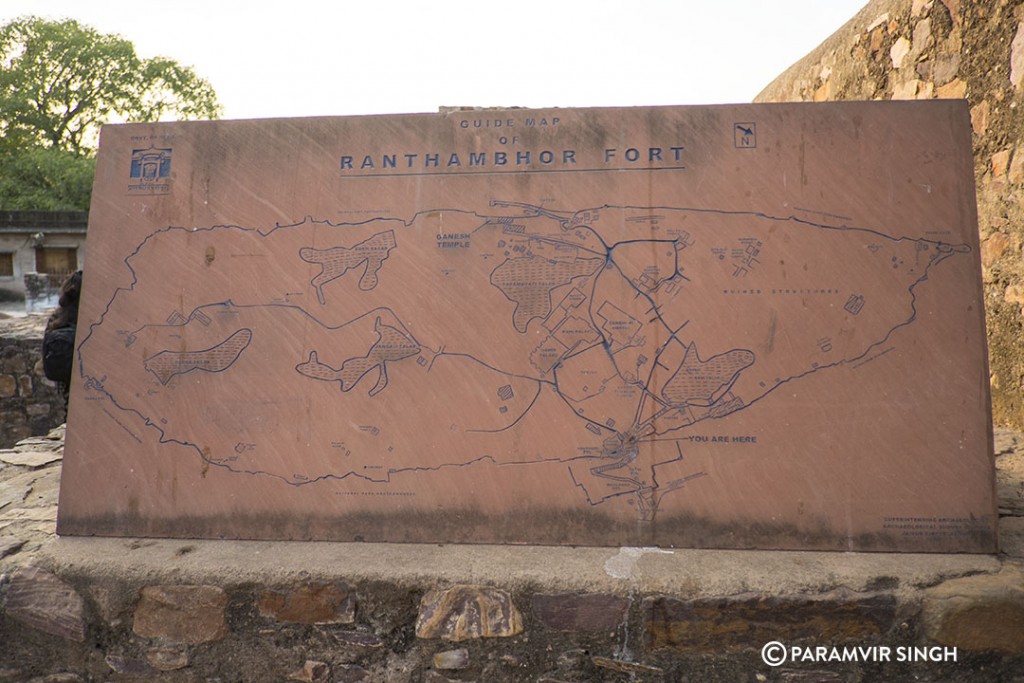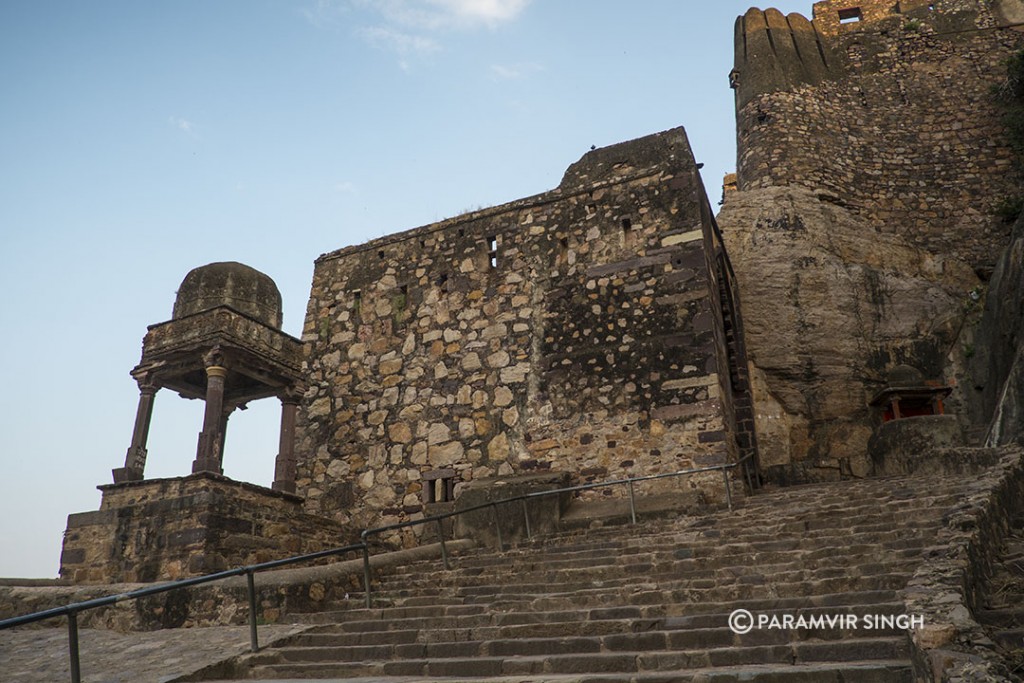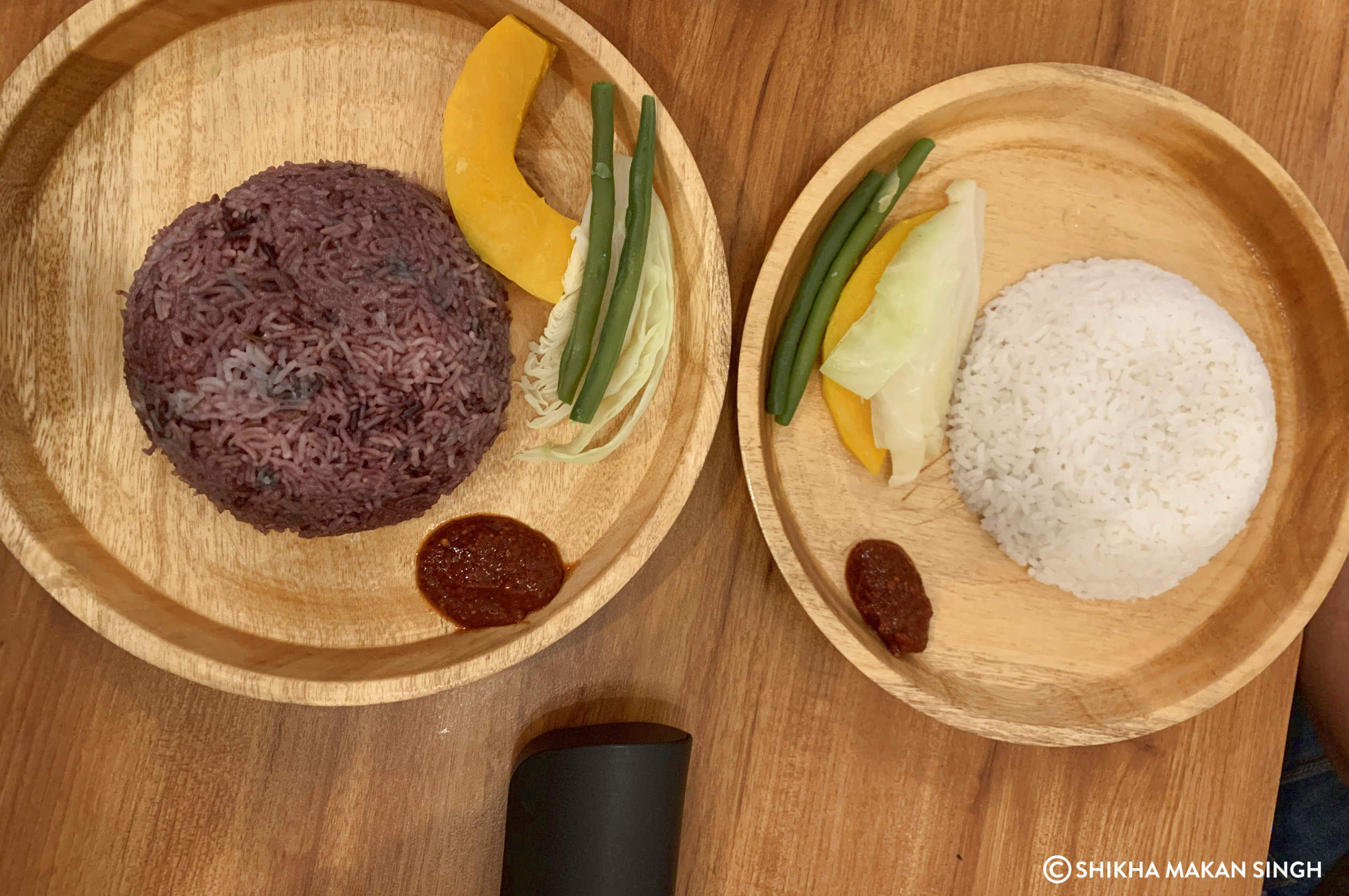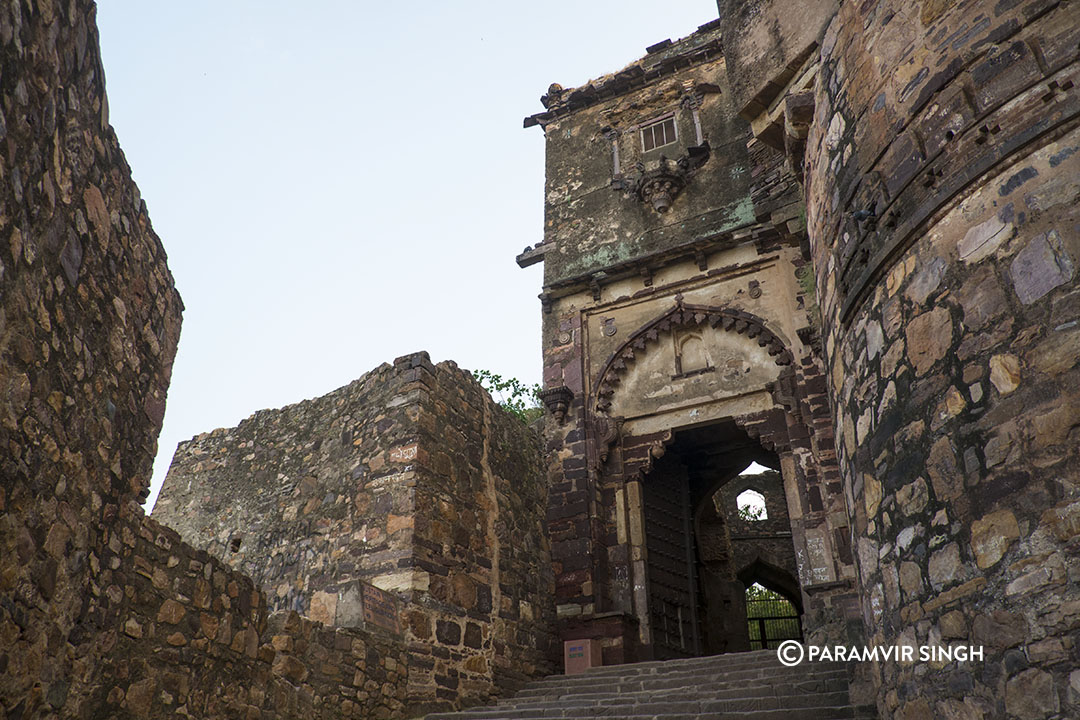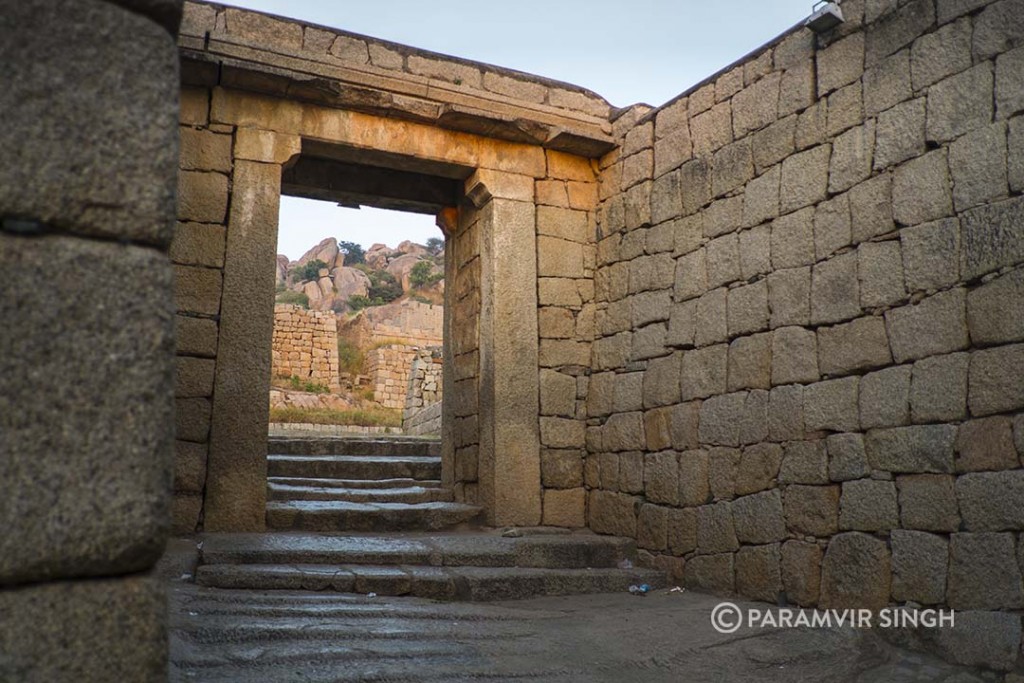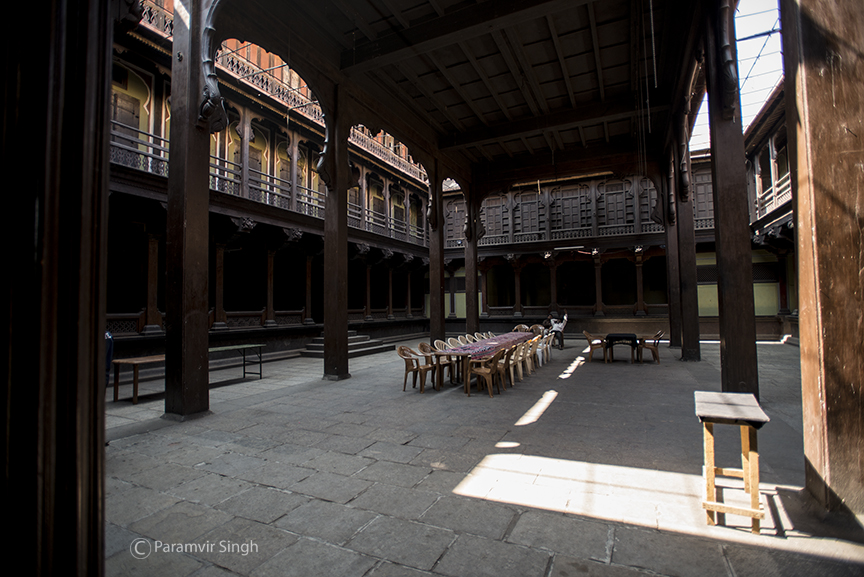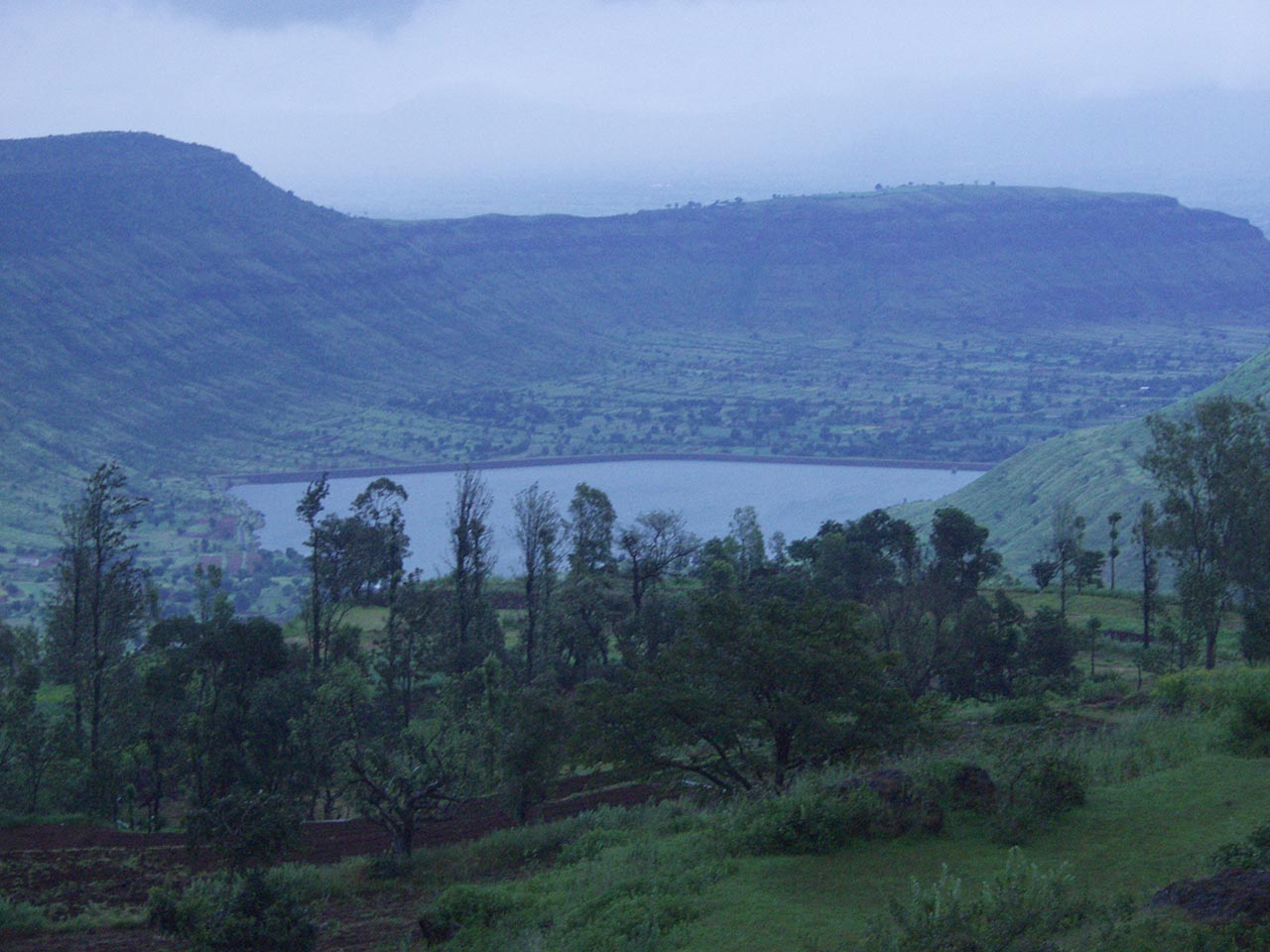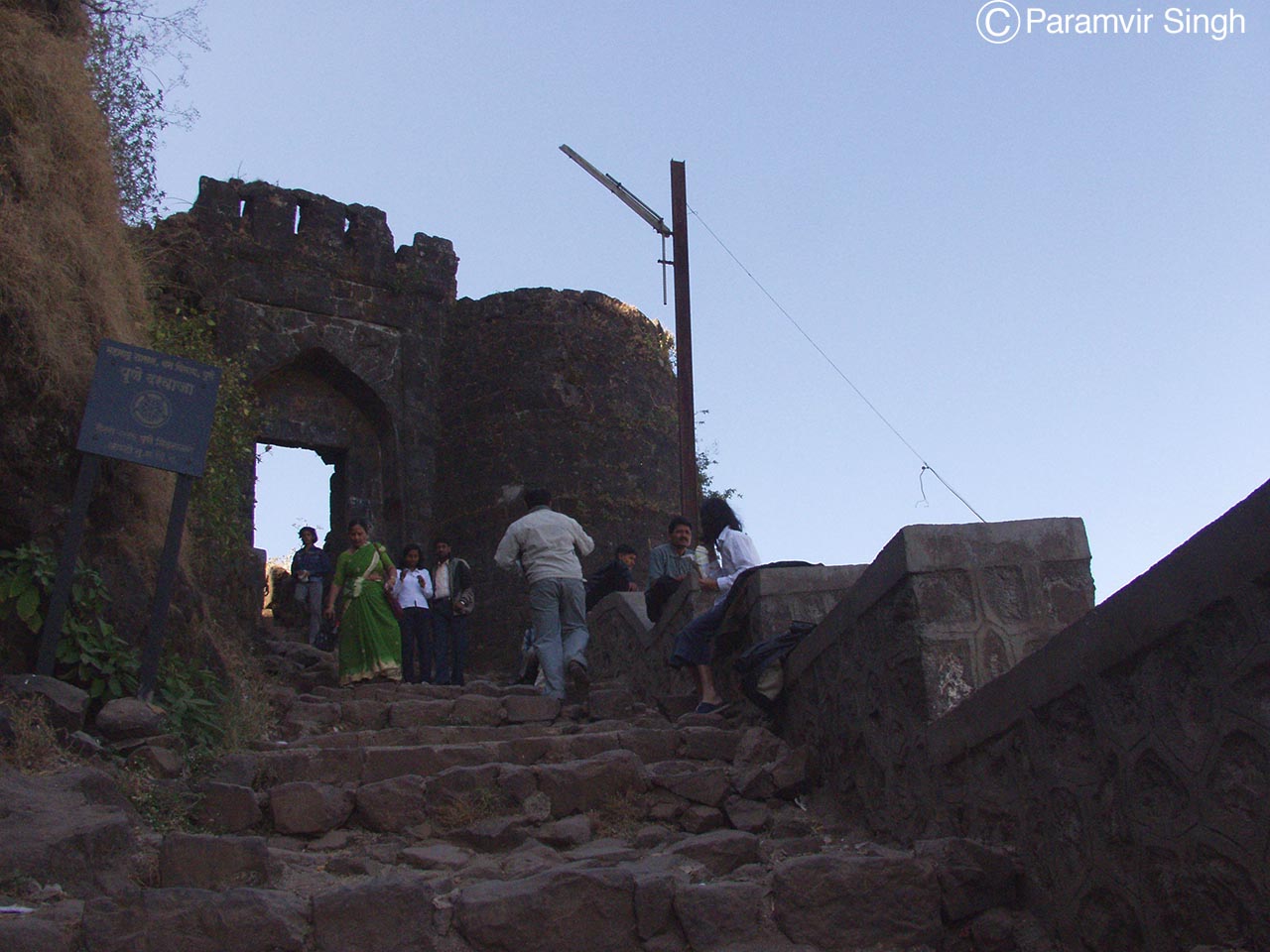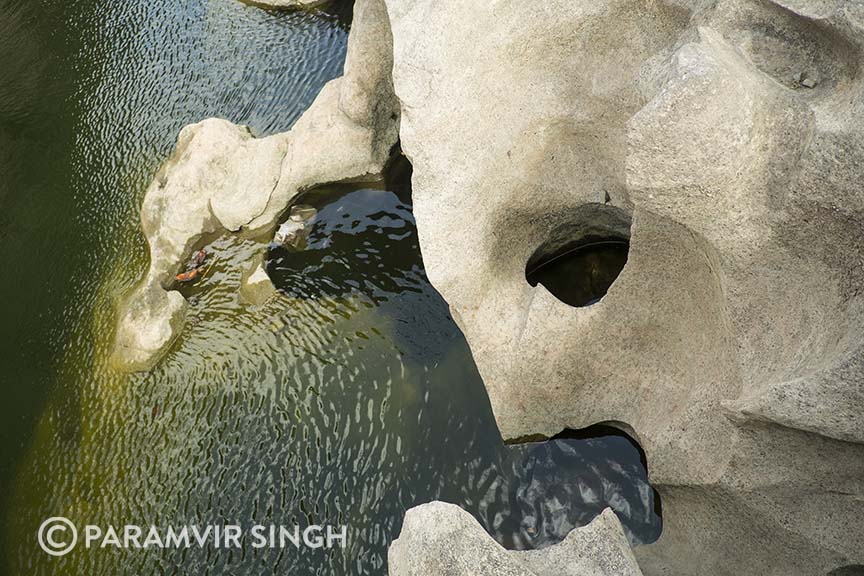One of the things that make Ranthambhore National Park so mesmerising is the backdrop of the majestic Ranthambhore Fort. So a visit to the fort is a must. As we entered the fort one evening, the sun was already down on the horizon, and we weren’t too sure of spending too much time inside. It looked just too ‘touristy’. Soon a local guide started following us, while we didn’t want him. After much negotiation, we agreed to let him ‘guide’ us through a tour of the fort. It turned out, as usual in such places, to be a good idea.
The Ranthambhore Fort has seen many ups and downs and our guide Lal Singh narrated them all, some fact, some legend. As we walked through the stone corridors, the large Pols (or doors), the narrow winding steps, the Badal Mahal, Hameer Palace etc, his stories enacted the scenes in our minds. We felt our blood boil at the back stabbing of Rana Hameer Singh, the heart saddened at the mass Jauhar of the fort women, we heard the footsteps of infantry, and the horses running up the stone steps.
From the Badal Mahal and the higher regions of the fort, we sat and soaked a commanding view of the Ranthambhore National Park and the Padam Talao. We imagined the tigers basking by the lake amidst the tall grass. We heard the Bulbuls sing, the Indian Robins chase flies in the bush. We wished we had come with more time.
Built around 944 AD at an altitude of 700 metres above the surrounding plains by the Nagil Jats, the fort was also known as Ranasthambha or Ranasthambhapura. There is a Buddhist Bharhut Stupa inside the fort. established around 3rd Century BC, by the Maurya King Ashoka. One of the pillars bears an inscription which reads:
Moragirihma Nāgilāyā bhikhuniya dānam thabho.
Meaning: ” Pillar-gift of the Nun Nagila of Moragiri.”
Moragiri mentioned here is a town in Satara district, Maharashtra. Thus Nagil clan was in existence during Ashoka’s period as followers of Buddhism. (From Wikipedia).
Over centuries the fort passed through the hands of many ruling dynasties. The majestic architecture and its history of the Ranthambhore Fort make it a must see in the small dusty town of Sawai Madhopur.
